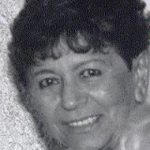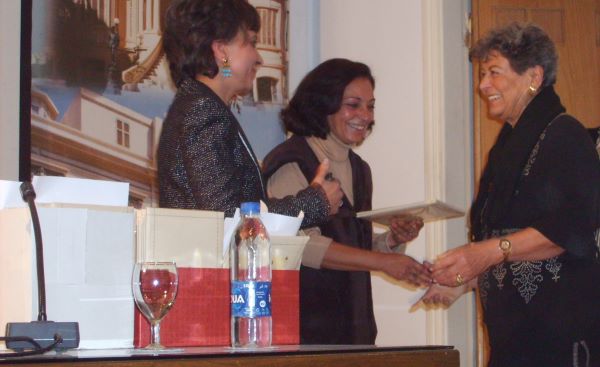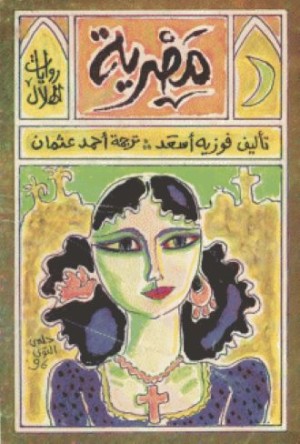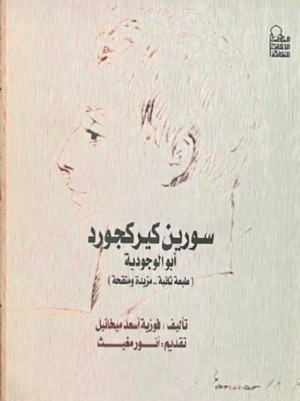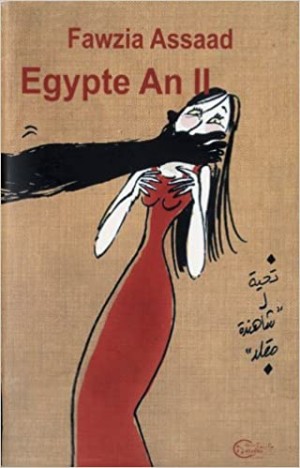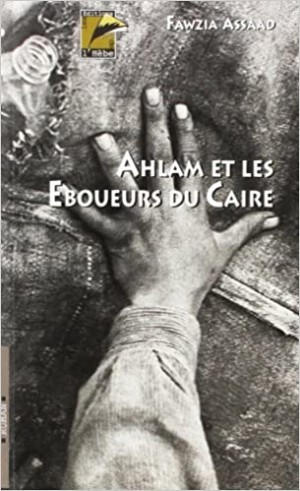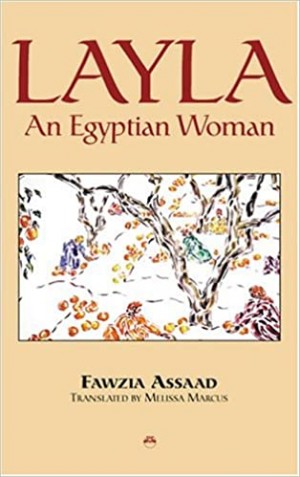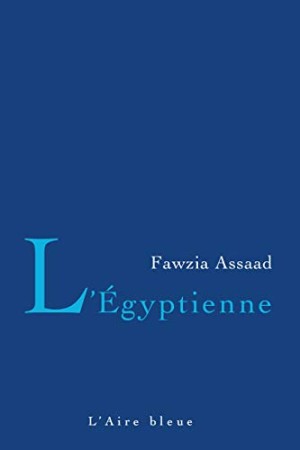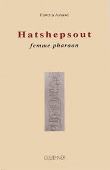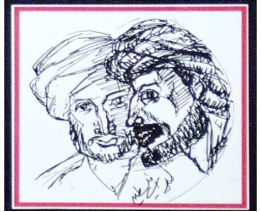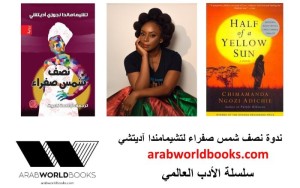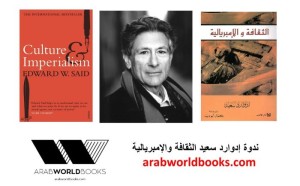Fawzia ASSAAD-MIKAIL 17 July 1929 – 2 October 2023
Fawzia Assaad was a friend of arabworldbooks.com since its founding in Geneva in March 1998 and was like a second mom to Amani Amin the founder of the website.
Her book Hatchepsut - The Woman Pharoah was featured in our book of the month in May 2003 and we celebrate her life and outstanding achievement discussing her novel An Egyptian woman on 25 November 2023.
You can find more information on the author and readers comments on the pages of both books.
In 2008, Assaad was one of the recipients of our Tenth Anniversary Award presented to writers and volunteers who played a pivotal role in the success of our website - particularly in its early years- and to writers who have enriched our pages with their creative writing and enlightened us with their progressive thinking.
The photo below is from our tenth anniversary celebration, which took place on 27 January 2009. Samia Mehrez greets and presents Fawzia Assaad with her award.
Fawzia Assaad's Bio below remains as she last updated it.
Fawzia ASSAAD, born in Cairo under the maiden name Mikhail, currently lives in Geneva. Her novels portray Egyptian society in all its complexity, describing all social classes, the Muslims and the Christian Copts, the customs, beliefs, humour, superstitions and politics. In each of her works, a thread ties ancient Egypt to modern day life.
It is only since 1975 that Fawzia Assaad has been a novelist.
Indeed, she obtained a PhD from the Sorbonne in Philosophy and taught Philosophy at the University of Cairo.
She resigned from her position as university professor to follow and support her husband , a Doctor working at the World Health Organisation, in his missions. She now has three children and six grandchildren. She initially continued to publish a large number of philosophical essays in prestigious journals, but her interest gradually turned away from philosophy towards mythology and the novel. Her first novel was published in 1975 and she was twice awarded prizes by the city of Geneva for her novels.
In addition to her writings, Fawzia Assaad is very active in both political and literary circles. She defends writers in prison by representing the international PEN at the United Nations Commission for Human Rights and she coorganizes a writer's retreat at the Chateau de Lavigny near Lausanne.
Address: 2, chemin de Sous-Cherre 1245 Collonge-Bellerive, Geneve Tel. 022 752 1625 e-mail: fassaad@worldcom.ch
Her Publications & Literary Works include:
PHILOSOPHY
In Arabic:
* Soren Kierkegaard, Father of Existentialism
Cairo, Dar-el-Maaref, 1960.
On the absence of an absolute truth and the role of faith in religious experiences.
In French:
Préfigurations Egyptiennes des Dogmes Chrétiens
(Egyptian Prefigurations of Christian Dogmas)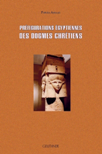
Our history is as old as the Nile River. It is a story of death and resurrection, like that of the fields that dry up annually and are reborn after the floods, or of the earth that is darkness at night and bathed in light when the sun rises every morning. Life and death are incarnated in the passion of the god Osiris. Chopped into pieces by his evil brother Seth, he is reassembled and buried by the goddess Isis. His buried body is as fertile as the Nile valley and gives rise to the birth of Horus, son of Isis. Thus, the goddess had the power of healing the dead. The passion of Christ on the cross reiterates Osiris’ mystical destiny; his descent into hell parallels that of the sun in the underworld of darkness, and that of the barley grain into the earth, as well as their return to life and light. Osiris was the mythological ancestor of Pharaoh.
Hatshepsut, woman Pharaoh, had the story of her divine birth represented on the walls of the Deir-el-Bahari temple, as miraculous as the birth of Jesus. She, daughter of Ra’, He, son of God, are baptized in the waters of the Nile, or in those of the Jourdain. Water is new life given to the earth and given to the sun, which represents Pharaoh. The flood is goddess, both tomb and cradle of the earth. When she arrives, the people chant Neferet iti, the beautiful one has come. This is the name of the great queen Nefertiti, whose husband Akhenaton bears a name of light. Akh n Itn brilliance of Aton. A new sun will be born of their marriage, like the sun born every day from the marriage between water and light.
Our ancestors have invented an author for this myth. Thot, god of words and of writing. He is represented as an ibis because his curved beak resembles a moon crescent. He is the luminescence that enables the sun to exist throughout the night, like the ship that carries the dead sun in its journey through the underworld of darkness towards the light. Thot became the holy spirit. Why has he replaced the goddess in the Christian trinity? He was the creator of languages, languages that were Jesus’ gift to his apostles on Pentecost. His book, unknown, had remained the secret of the goddess. The quest for this book is what was left.
Pharaons Heretiques 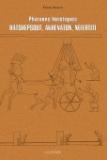
In a thoroughly researched yet appealingly personal essay, Fawzia Assaad addresses the recurring questions :
Is Aton a god, a super king, a metaphysical concept, a name for the sun ? Is the pharaoh Akhenaton the first monotheist or the first deicide in history ? Is he the loser or the winner of an endless war against Amon’s clergy? Is Amarnian thought built upon that of Hatshepsut?
These questions and many more are explored via successive approaches that follow the evolution of amarnian thought, while questioning historical facts and founding myths.
Hatshepsut, Akhenaton and Nefertiti, strategists and philosophers before their time, provide a solid foundation for a highly academic research effort that discards religious language and that places Egyptian thought at the source of Western philosophy. Hatshepsut, Akhenaton and Nefertiti, strategists and philosophers before their time, provide a solid foundation for a highly academic research effort that discards religious language and that places Egyptian thought at the source of Western philosophy.
Philosophical Essays in the Revue de Metaphysique et de Morale from 1962 to 1973
Focusing on the different interpretations of Nietzsche's Philosophy. The author emphasises the role of intertextuality and interpretation which are shown to bring out different philosophies from a single text.
Novel sources such as the Iranian Zarathoustra and Kierkegaard's background are considered. This new approach to Philosophy was presented at the Sorbonne under the title:
Nietzsche et ses Interpretes: le Jeu des Formes en Philosophie. (Nietzsche and his interpreters:the Game of Forms in Philosophy.) Bulletin de la Societe Francaise de Philosophie: Seance du 22 mars 1969
 Les Prefigurations Egyptiennes de la Pensee de Nietzsche ( Egyptian Prefigurations of Nietzsche's Philosophy)
Les Prefigurations Egyptiennes de la Pensee de Nietzsche ( Egyptian Prefigurations of Nietzsche's Philosophy)
L'Age d'Homme Lausanne,Switzerland, December 1986.
In this work, the imagery of Nietzsche's works and of Ancient Egyptian mythology are shown to be remarkably similar. Through her different readings of Nietzsche Fawzia Assaad was drawn to an imagery she found akin to that of Ancient Egyptian. She studied hieroglyphics to go to the source of its meaning. Ironically, it was Heidegger, though he denies the existence of Philosophy before the time of the Greeks, who gave her , in his work on Nietzsche, the key to a double interpretation: Nietzsche interpreting Ancient Egypt thought, Ancient Egyptians interpreting Nietzsche.
Freud et les Mythes Egyptiens ( Freud and the Egyptian Myths) Mythes et Psychanalyse, In-Press, Paris 1997, Actes du Colloque de Cerisy-la-Salle.
Freud applied to his interpretation of Akhenaton's cultural revolution a patriarchal structure stemming from Biblical roots.
NOVELS *
L'Egyptienne: Mercure de France, Paris:1975. 
Misriyya The Arabic translation was published in Cairo at Dar-el-Maaref in January 1997.
Layla the English version shown right was published by Red Sea Press in 2004.
A somewhat autobiographical novel about a Christian Coptic girl growing up in Cairo and her family spanning the British occupation to the Arab Israeli War. This novel features several women characters from different backgrounds and portrays their traditions and their urge for change.The images of the past are caught in everyday's life, the ancient myth of the Enemy brothers perpetuates itself throughout the dramatic events of the Arab Israeli war narrated with that Egyptian brand of humour that heals the wounds of repeated occupations.
* Des Enfants et des Chats (Of Kids and Cats) 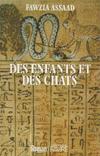 P.M. Favre: Lausanne, Switzerland, February 1987.
P.M. Favre: Lausanne, Switzerland, February 1987.
The story of the war between twins whose souls are transformed into cats at night in their sleep and the story of the war between Egypt and Israel.
A Sultan is in search of a vizir. He informs the people of his vast empire that whoever is able to carry a bag full of mice from Basra to Bagdad will become his vizir. On the road, the mice rapidly gnawed their way out of the bag. All those who tried failed with one exception and to that man the Sultan said: "You are brave and you will become my vizir, but just tell me how you managed".
"Trivial", said the man. "I go on my way until I feel the mice are trying their way out, then I shake the bag hard, the mice accuse each other of felony, bite, fight each other; when I feel peace and calm, I shake again the bag, the mice, busy fighting, stay in the darkness, and I repeat the shaking all along the way, every time it is necessary." The Arab Israeli war is paralleled to the story of the vizir and the bag of mice in this Muslim family saga. Written 10 years after L'Egyptienne, it shows the same behavioural structure as the Christian family saga of the former novel. Its youngest children are twins. A folk belief says that the souls of twins become cats during their sleep and roam around. Hurting them would hurt the twins themselves. In Ancient Egypt cats were worshipped for their capacity of catching the lights in the dark . Will these twin
brother and sister be more clairvoyant than the mice in the bag? Will they perpetuate that other myth of Enemy Brothers?
* La Grande Maison de Louxor ( The Great House of Luxor) L'Harmattan, Paris: April 1992.
 Photo: Francis HallerIn their mansion close to the temple of Luxor, an elderly Pacha and his daughter host a beautiful collection of ancient art and bleed to see their cultural inheritance threatened by dams, mass tourism, thefts, wars, terrorism, and last but not least, sheer ignorance.
Photo: Francis HallerIn their mansion close to the temple of Luxor, an elderly Pacha and his daughter host a beautiful collection of ancient art and bleed to see their cultural inheritance threatened by dams, mass tourism, thefts, wars, terrorism, and last but not least, sheer ignorance.
The Great House is in modern times a translation of the Ancient Egyptian word Pharaoh Per Aa.This Great House next to the temple of Luxor shelters in fact a famous Coptic Christian family whose descendant, a pacha of the time of King Farouk, became very fond of Egyptian art.
On the other side of the Nile the temple of Hatshepsout, the woman Pharaoh, can be seen. The pacha loves his youngest daughter and indulges in the belief that she would be a new Hatshepsout. Her name is Sawsan, the Arabic for Susan and for the ancient Egyptian Seshen: the lotus that was worshipped and deified because it opens up with the day as if to give birth to the sun god. The author identifies herself with Sawsan and follows her life path from the time of the early glory of her family through the Revolution and the Arab-Israeli war. Because of his notoriety, the pacha of Luxor had been treated as an enemy of the people. He had collected beautiful works of ancient art. No one knows what became of them.
HUTSHEPSOUT Femme Pharaon
Autumn 2000
Geuthner's Librairie Orientaliste, 12 rue Vavin 75006 Paris.
HATSHEPSUT A WOMAN PHARAOH Arabic version published in 2003
A hybrid of legend and biography
"Ahlam et les Eboueurs du Caire" editions de l'Hebe (Ahlam and the Garbage Collectors of Cairo)
In her latest book, Fawzia Assaad documents with great accuracy, detail and precision the true story of the garbage collectors of Cairo. They gather and sort the garbage, and raise pigs. The reality of these marginal existences is portrayed in all its brutality. Soeur Emmanuelle discovers these poor people and rapidly perceives the industrial potential of introducing a compost plant. This initiates a highly successful developmental effort, sustained by the World Bank, governmental and non-governmental organizations, the National church, and the Egyptian and foreign bourgeoisie. The garbage collectors come to enjoy the benefits of education, water, electricity and proper accommodations. In a city stifling under an exploding population, the garbage collectors become aware of the ecological importance of their activities. Under the pretext of modernization, foreign contractors are brought in and threaten to deprive this tenuous community of the wealth it has forged from trash.
At the center of the book is the story of a woman called Ahlam. Her name means dreams. It expresses the aptitude these poor people have of blending a faith in miracles with an acceptance of the harsh reality.
Ahlam receives lavish attention from a dedicated group of women from the Egyptian Bourgeoisie, whose goal is to empower women through education and financial independence. Yet her life is a constant struggle against poverty and tradition.
Contributions to Collective Works:
Butor l'Egyptien ( Butor the Egyptian). In Butor aux Quatre Vents: Jose Corti, Paris, 1997,
A fantasy literary Critique of Michel Butor who happened to teach French in Minieh, Egypt before he became a well known writer whose seventieth birthday was celebrated with this collective work.
Dreams, Reves in Edge of Awareness for the 50th Anniversary of World Health Organisation, Art for the World, 1998, published in French and English or in English and Spanish, it portrays the destiny of a young woman living in a developing scavenger community.
